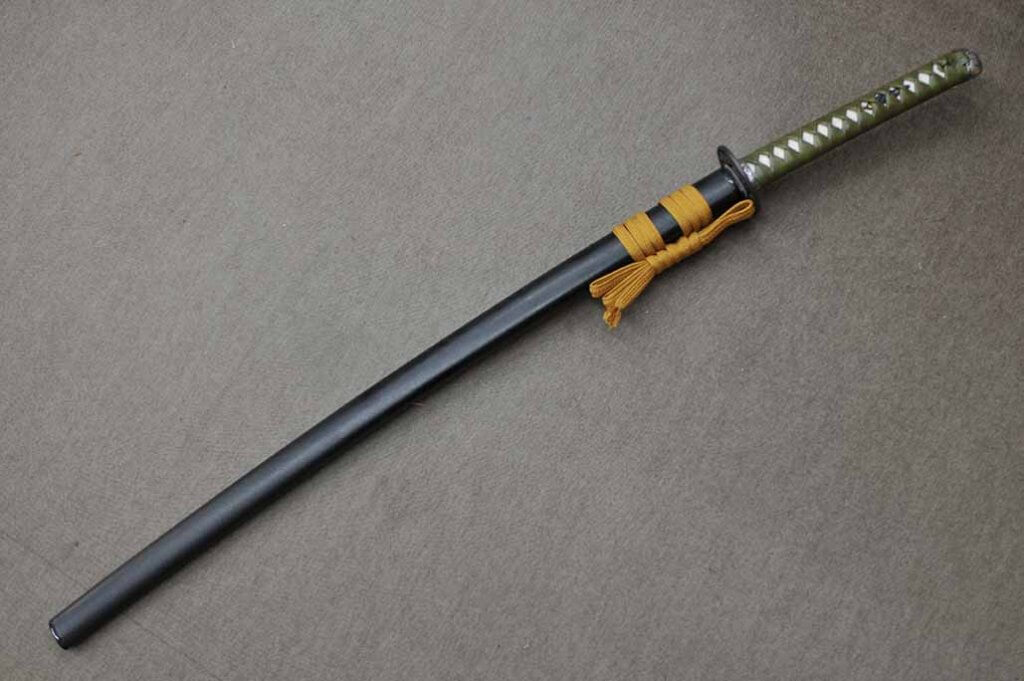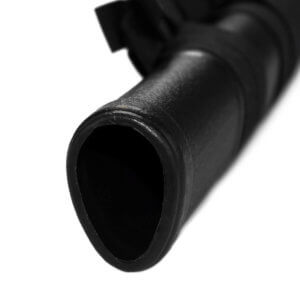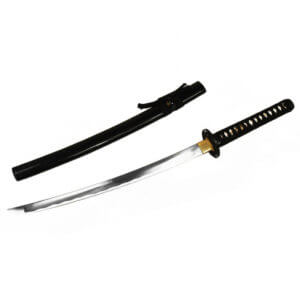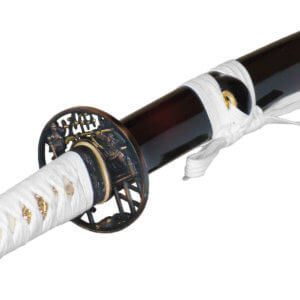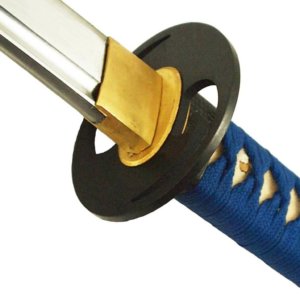Shinsakuto means new sword. The Japanese sword has been made in a similar way for centuries and enjoys a high reputation worldwide. This reputation has been hard earned through tradition and the general mentality of Japanese swordsmiths. Although the swords are of course no longer used as weapons today, there are numerous collectors and interested parties.
Are there still Japanese swordsmiths today?
Even today, Japanese swordsmiths forge swords in the tradition of their ancestors. Their newly crafted swords are called shinsakuto, which means new sword.
The oldest blacksmith school that is still active today is the Gassan School, which has been active since the 12th century.
There are regular blacksmith competitions in Japan where contemporary blacksmiths are judged and honoured. Blacksmiths who are successful in these competitions receive worldwide recognition and their swords can already cost 50,000 euros or more.
Some Japanese swordsmiths have already achieved legendary status. Probably the best known are Gassan Sadatoshi and Yoshindo Yoshihara. Their swords are rare and already very expensive today. But there are also numerous other talented swordsmiths in Japan. Contemporary swords that are newly produced today are called shinsakuto.
What characterises a genuine Shinsakuto Nihonto?
The new swords are still made in the old tradition today. On the one hand, this means that the design is based on historical swords, but the working methods and materials also correspond to the old tradition.
The steel used is Japanese Tamahagane steel (not to be confused with Chinese Tamahagane steel!), which is produced in Japan in a racing furnace (Tatara) as it was 200 years ago.
The different and unevenly distributed components of the steel make the production of the blades a major challenge.
According to Japanese interpretation, these irregularities form the foundation for the soul of the sword.
"The combination of "bad" and "good" steel and an excellent forging technique give a blade its beauty and personality, just like a person. A perfect blade has no personality."
- Yoshindo Yoshihara
Mastering these requirements and forging a functional, durable sword is the great art of Japanese swordsmiths. This requires numerous work steps and "tricks" that are only mastered by a few people in the world.
Passing on the secrets from generation to generation is the basis for the unrivalled craftsmanship of the Shinsakuto forge.
Why does a new Japanese katana cost so much when historical Nihonto are cheaper?
For the production of a katana in Japan, a budget of at least 4-5 figures should be available. This is due to the elaborate production and high quality of the swords. Some historical swords are available for the same price or even cheaper. Nevertheless, many people prefer to have a new sword made.
Some historical Japanese blades are 300 years old or more and time naturally wears on the blades. In practice, this means that there are some side effects, such as signs of fatigue of the steel due to frequent polishing, rattling attachments and mounting, possibly a poor general condition, etc..
If you would like to find out more about this type of Japanese katana, you can also read our article on Nihonto.
Historical swords rightly inspire many collectors. Modern Shinsakuto are manufactured for this purpose. This means that all attachments still fit as they did on the first day and the sword is simply completely new, including a new polish and all the trimmings. The basic appearance of the new swords corresponds to old examples and, especially in connection with a martial art, a modern production is probably the better choice for practising.
Even though there is rightly a large fan base for Japanese Nihonto, which are antique, owning a newly made sword also has its appeal.
What makes more sense varies from individual to individual. We would be happy to advise you on this. Simply contact us using the information available under the link "Contact us" find.
Buy Shinsakuto at Samuraischwert.kaufen
We consider it to be an important legacy of human history and are therefore delighted to be able to make a small contribution to the preservation of this art.
That's why we can have swords made for you in Japan. These new swords are a real eye-catcher and contain the tradition and craftsmanship that has matured over centuries.
The prices vary according to the respective requirements. Another possible alternative of relatively new swords are finished swords from our shop that were forged in the recent past.
Exciting documentary about the work of Master Gassan:

